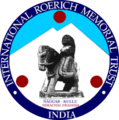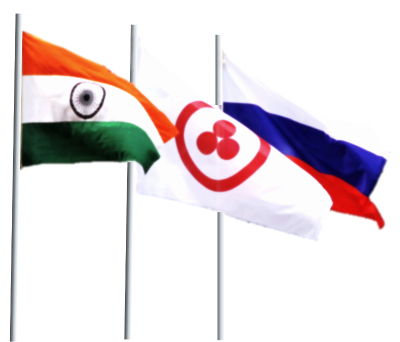Himalayan Folk Art Museum
The idea of creating the Museum of Himalayan Art in the premises of the Roerich Estate belongs to Svetoslav Roerich. He planned to construct of a new museum building where samples of old Himalayan schools of painting dating back to 17-18th centuries, folk artworks of the Kullu valley and adjacent valleys would be displayed.
Stone sculptures of deities once collected by the Roerichs from ruined temples are displayed in the small Gallery. The statues of Shiva and Parvati along with the bull Nandi; wise Ganesha, militant Durga vanquishing the demon, Vishnu reclining on the serpent Sheshnag exemplify the ancient art of stone carving and represent traditional religious beliefs. In the same gallery one can see the wooden temple gate with skillfully carved figures of Krishna and gopis, Goddess Durga, Shiva and Parvati. Its door jambs are decorated with the naga and other traditional folk motifs.
The display also presents some carved wooden objects still specific to traditional houses and ancient temples of the Himalayan valleys.
Weaving has been one of the most important crafts and the pride of the Himalayan peoples through the ages. Today, using handlooms skilled weavers make traditional women’s clothes “patu” and picturesque shawls decorated with bright traditional patterns and ornaments. The Kullu Valley shawls are particularly renowned for their flair. The lively samples of the art of weaving are presented in the display.
Among the exhibits the traditional masks of the God of Sun Surya, Radha and Krishna as well as metal dishes depicting God Ganesha and Goddess Durga sitting on a lion are of particular interest. As the “Age of Gods” still lingers in Kullu and other Himalayan regions, the ancient craft of making masks and other ritual metal objects continues to be relevant and in high demand.
At present, the halls of the Urusvati Institute mostly display the artworks from the Roerichs’ collection as well as contemporary examples of traditional folk art of the Kullu valley and other Himalayan regions. The renewed display prepared jointly with the International Centre of the Roerichs, Moscow with the support of the Kullu District administration headed by Director, IRMT Mr. Rakesh Kanwar was opened on October 23, 2015.
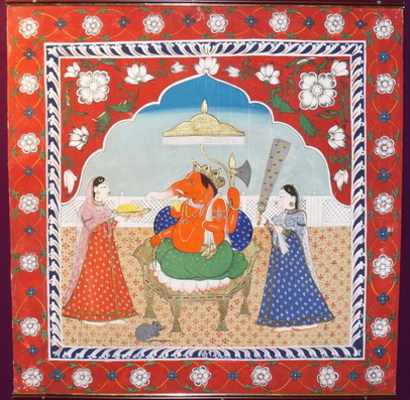
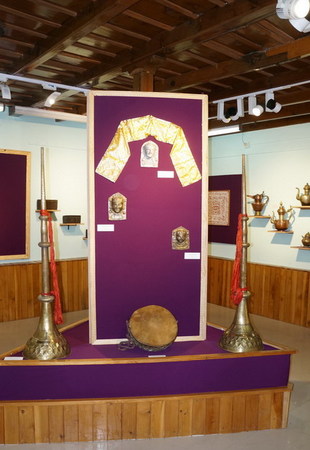
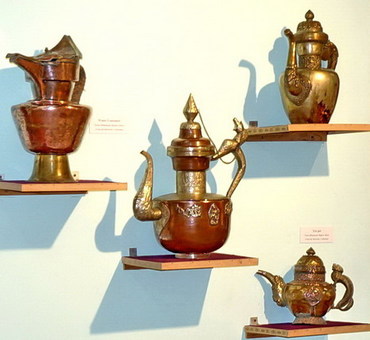
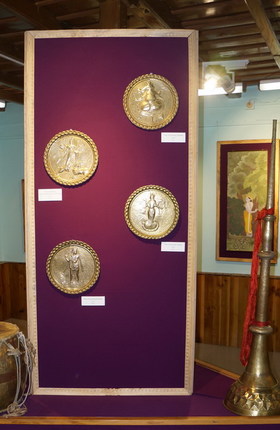
Including the Himalayan Folk Art Museum into the IRMT museum complex will provide an opportunity for a deeper study of the life and creative work of the Roerichs who loved, studied and collected Himalayan artworks. Establishing such a museum will contribute to protection and promotion of Indian cultural and scientific heritage which is part of the world heritage.
Setting up of the Himalayan Folk Art Museum in accordance with the will of Svetoslav Roerich will help preserve for future generations the examples of unique Himalayan folk art as well as their traditions, customs and ancient technologies which are part of non-tangible spiritual heritage. The museum exhibition will help visitors get to know the history and culture of the Himalayan region, trace the continuity of the Indian spiritual tradition and its connection with other world cultures, especially the Russian.
Kashmir vases made of papier mâché with elegant and colourful motifs, modern paintings in the traditional pahari style and folk music instruments are also displayed here.
Indian embroidery traditions are quite diverse in terms of their beauty and richness of colour.
Platbands and carved panels, wooden boxes and chests with their ornaments and symbols are amazingly similar to the Russian art of woodcarving.
Among the exhibits you can see true masterpieces, the so-called “rumals” that the Chamba Valley is famous for. A unique stitching method used for rumals makes them two-sided. In the Middle Ages entire scenes from Krishna’s life were embroidered in the rumal technique.
